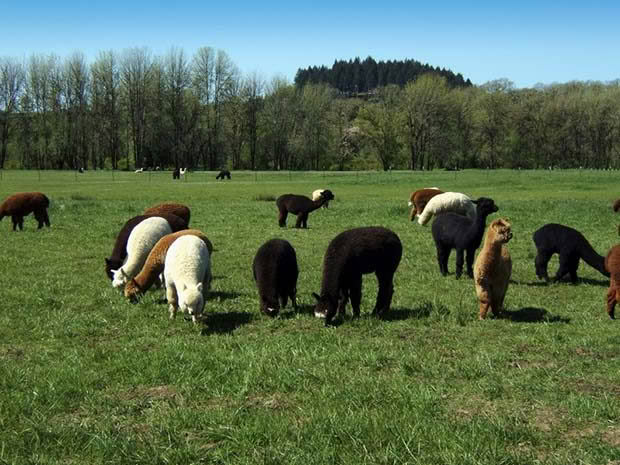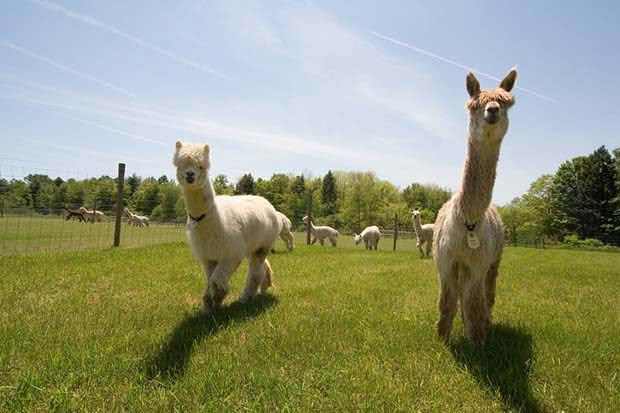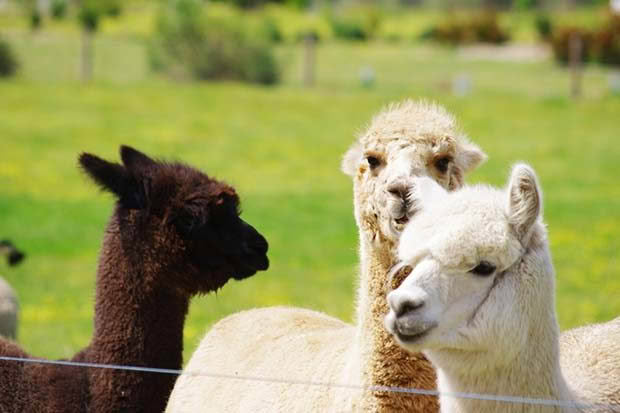Why we need to start eating alpaca
They’re one of the cutest, cuddliest livestock you’ll find, and their numbers are rising, reaching over 25,000 in the last few years, which is why this dedicated alpaca breeder believes we need to eat them.
Words: David Bridson, Elysian Alpacas

Alpaca breeder David Bridson believes there is great potential in breeding alpacas for their meat. Photo: © Zenharmonic | Dreamstime.com
We have a great affection for our alpacas. They are intelligent, easy to manage, and have a light environmental footprint.
We farm alpacas because we like them or we wouldn’t be doing it, but at the end of the day, they are animals and we are farmers who are in business to profit from our farming activities.
One aspect of alpaca farming that has great potential is their meat. Alpacas are fundamentally no different in this respect from any other farm animal.
They are intelligent, they are beautiful, but it is their over-production of fibre and offspring that enables us to make an income from them.
Like all livestock, they produce more males than we can handle, and both sexes reach the point where they are no longer able to produce viable offspring or quality fibre consistently.

Many farmers sell surplus alpacas on Trademe, flooding the market. Image: Fairy828 | Dreamstime.com
While alpacas are one of the most efficient converters of grass into protein, eventually the interplay of climate and soil fertility makes it risky for us to try to carry increasing numbers of stock.
There are several ways that alpaca farmers manage this problem. One way is to dump them for rock bottom prices on Trade Me. This may make some farmers feel better about not having to kill them themselves, or it may provide a quick way out of the industry for others.
But dumping alpacas is not that different to dumping surplus roosters on the side of the road. It devalues the livestock of others, and there is a strong suspicion that the welfare of the dumped animals is also placed at risk.
The best course for the future is to expand on what we are already doing, developing markets for breeding animals and fibre, continuing to sell pets to responsible owners, and producing value-added products such as cloth and garments.
But I would add meat to the equation. So far, we have not reached anything like the potential of the alpaca as a farm animal. Some farmers in NZ have made a lot of money out of alpacas by breeding top quality animals and selling them, others have turned their fibre into value added products and found profitable markets for them.
However, there are only a relatively small number of alpaca farmers who are utilising their meat. One exception is Tessa and Peter McKay of Mesa Mills (www.mesamill.co.nz). Their company, just outside Hastings, supplies alpaca meat as a gourmet product to supermarkets, restaurants and cafes around NZ.

Alpaca meat is a low-fat alternative to beef. Photo: Chrispoliquin | Dreamstime.com
HOW TO EAT YOUR ALPACA
The laws around home-killing animals for meat in New Zealand mean that only the animal’s owner and family can eat it, and it is illegal to sell, trade, or barter the meat to anyone else. It cannot be served to paying customers, raffled, or donated for use as a prize. Home-kill can only be undertaken by the animal’s owner on their property, or by hiring a listed home-kill or recreational catch service provider.
There are only two abattoirs in New Zealand licenced to kill alpacas, one in Feilding and the other in Ashburton, and another five pet food abattoirs. My view, and one shared by others I have talked to, is that freight costs and stress on the animals may rule out transport of alpacas for all but those within a reasonable distance of existing abattoirs.
All the alpacas I have killed have been two-year-old entire males. We don’t have a cool room to hang slaughtered stock so we take them to Gary Krom of Kaimai Range Venison who hangs them in his cooler for 4-5 days. Gary charges us about $125 to bone out and vacuum-pack the meat.
We find the best combination for us is back steaks, fillet, rump and Denver steaks, four seasoned rolled roasts, neck chops, and mince or sausages. From a live weight of 70-75kg, we end up with about 30kg of meat (boned out).
If we had to buy 30kg of beef of a similar quality we would be looking at around $20/kg so the value of that home-killed meat to us is around $500 from one animal once you deduct the cost of butchering and processing it.
The meat is tender and has a mild flavour. Neck chops can be tough so we cover them with water and cook them on low in our slow cooker with garlic and a mix of root and other vegetables for 12 hours or until the meat is separating from the bone. At that point we dispose of the bones; the meat and vegetables can be eaten ‘as is’ or thickened and made into pies.
Denver steaks are a versatile meat, with a slightly stronger flavour than the finer cuts like back, fillet and rump steaks. They are great for kebabs or can be cubed and used in stir-fries.
An alternative is to thinly slice it, then marinate and barbecue it, or use it in Asian dishes. We like a Korean bulgogi marinade which uses soy, sugar, green onion, minced garlic, sesame seeds, oil, and black pepper.
We also make a finely textured and flavoursome alpaca burger using fresh herbs from the garden, a bit of flour and garlic, some tomato purée and 2-3 eggs. I can’t tell you yet whether there is a decline in meat quality as animals age. Those who have tried it say not, and if this is the case then it is most fortunate for a potential alpaca meat industry.
HOW MANY ALPACA CAN COME FOR DINNER?
National alpaca numbers increased by about 3000 between 2012 and 2015. However, the more animals there are, the faster the growth; the increase in stock numbers is likely to follow an exponential growth pattern until such time as the market is saturated and the rate of culling matches the rate of reproduction.
Existing abattoirs ask for 200 animals to be killed at a time to make it worthwhile switching their killing chains from other livestock to alpacas. We don’t know how many alpacas are available for slaughter in any one year, but if we make an assumption that there are 5000 animals available each year for killing, that these animals are evenly distributed in both islands, and killing would take place for six months of the year, then there would be sufficient animals to supply two abattoirs in each island, provided that the infrastructure and markets were in place.
Those 5000 animals would yield around 150,000kg of boned meat which would represent around 0.04% of New Zealand’s annual meat consumption. To provide 1% would require around 120,000 alpaca carcases, 24 times the quantity of animals that may currently be available.
Initially, promotion of alpaca meat as a healthy alternative to beef and lamb seems like a promising way forward for the local market, but where it gets really interesting is in the astronomical potential for alpaca meat internationally. OECD projections are that up to 2022, 80% of the demand for meat production will come from developing countries.
ALPACA IS A TASTY, HEALTHY MEAT
Alpaca meat has plenty going for it, and it is delicious:
- it has half the saturated fat of beef (around 3%);
- it has a third less cholesterol than beef;
- the total fat content is low, around 6-7%;
- it has the lowest calories of any land-based meat (150 calories per 100g), and only about a third of those calories come from fat;
- if the animal is unstressed at slaughter, the meat is tender and mild-flavoured;
- it takes on the flavour of any marinades and sauces well.
About the author
Who: David Bridson, Elysian Alpacas
Where: Katikati, 25km north of Tauranga
What: 7ha (17 acres)
Web: www.elysianalpacas.co.nz
 This article first appeared in NZ Lifestyle Block Magazine.
This article first appeared in NZ Lifestyle Block Magazine.
